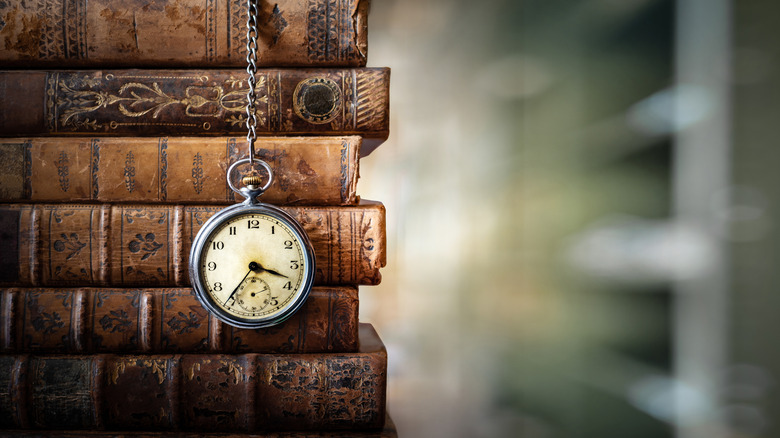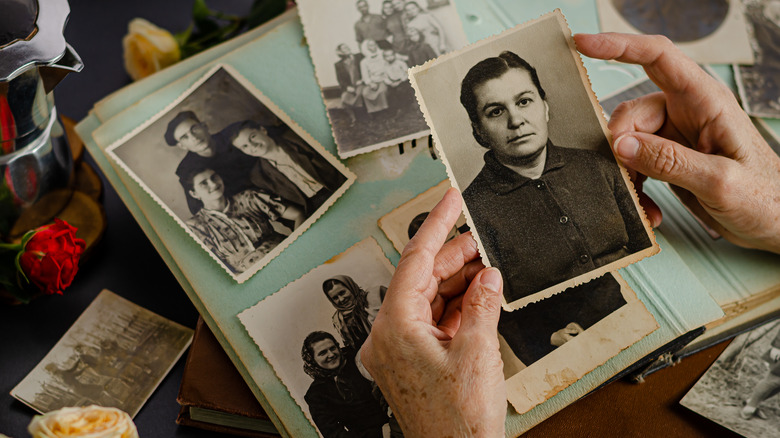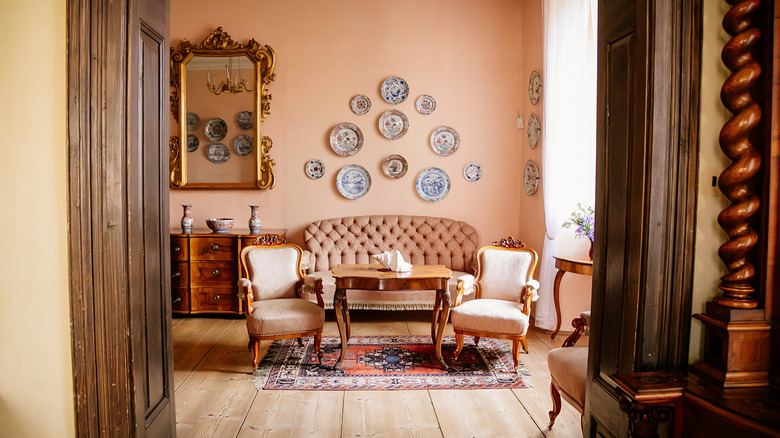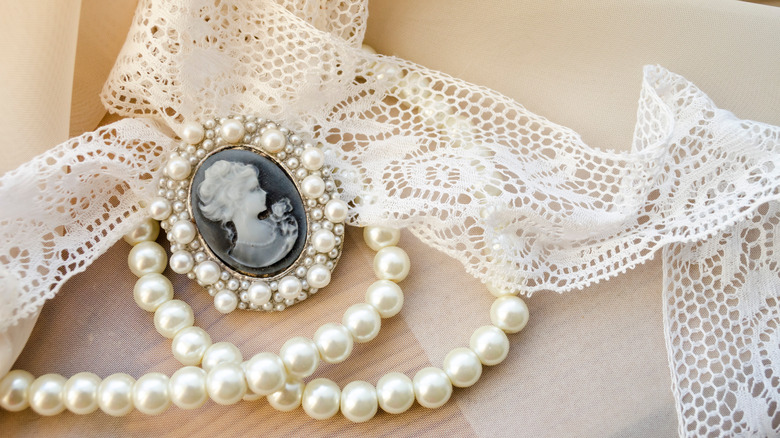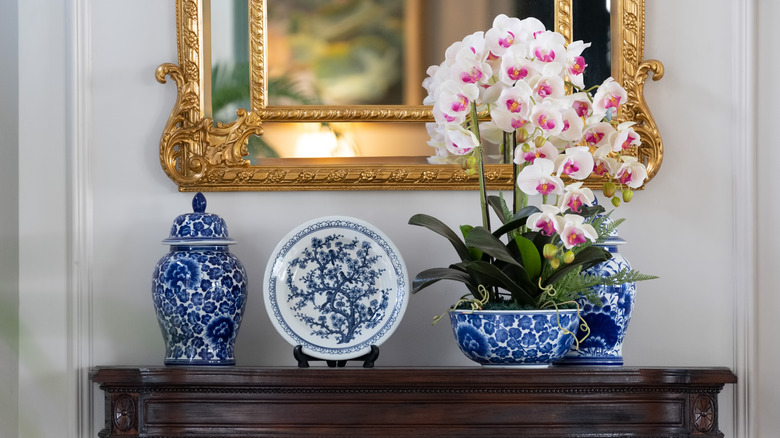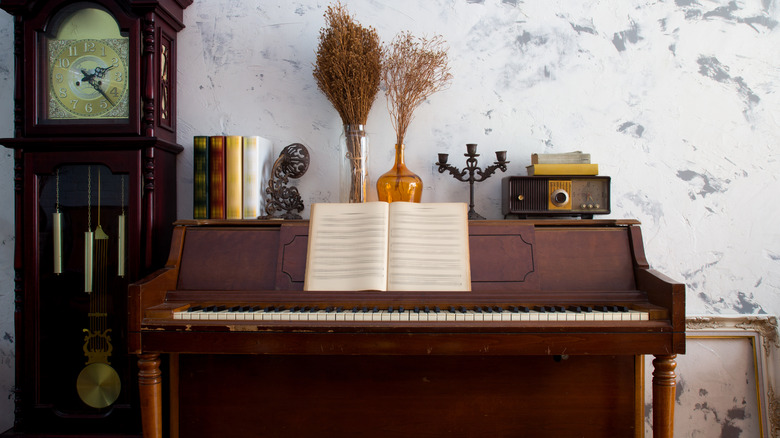Great Ways To Put Family Heirlooms On Display
Heirlooms are pieces and collections that remain in a family because they are a meaningful part of the family's history. They can be passed down from generation to generation or they can have a more recent story, but the most important part of an heirloom is that it's a piece of memory that has been given in love.
While they are treasured for the sentimental value they hold, heirlooms usually have some monetary value as well. Some of the most common types of heirlooms include jewelry, furniture, and photographs, per HowStuffWorks, and they can be very unique statement pieces. Because of this, figuring out how to incorporate them into your home's theme might be tricky.
This article gives you some ideas on how to put your family heirlooms on display. Finding new and creative ways to use them in your home is helpful in ensuring you keep getting value out of them and they remain an active part of your family life.
Turn heirlooms into décor
Give your unique heirlooms the attention they deserve by giving them a proper exhibition in the home as décor. Handmade pieces like letters, postcards, and your grandma's quilt can be beautifully hung in frames where they can be appreciated. Were you handed down weapons like knives or pistols? They can be put up in areas where they can be seen. Putting them in a frame or case also helps preserve them so they last longer. When placed in the right spots, they can give guests an insight into your life — just like the photo albums in the living room that can be used to entertain guests. They can also serve as great discussion starters, says My Domaine, and keeping them in a place like a bathroom means they will always be noticed.
You can also go beyond frames and use the photos directly on surfaces, integrating them into the actual furniture of the home. Glue as many photos as you will need to cover your side table or plates.
Repurpose furniture pieces
While you can use furniture pieces as they are, you can also be more creative by utilizing them in different ways. Find ways to bring those old pieces into the new age, says Houzz. Think of using that antique chest as a stool or that old clock as a frame for something else. A quilt or blanket can be altered into a couch cover where it will seen and used more often. For collections of small-sized items like keys and buttons, Houzz suggests putting them in fun jars that can act as decorative pieces for a table.
If you want to leave that chaise or ottoman as it is, consider a deep clean and new paint to transform it into something that can fit better in your space. Striking pieces that aren't common anymore — like vintage books, lamps or typewriters — can add a lot of flair when centered well in a study, bedroom, or living room.
Make heirlooms wearable
Even the most expensive dishware might not be what you want to regularly use in your home. So how do you avoid forgetting these precious materials in a dusty box? Make them into wearable pieces! Silver-plated items or china can be wonderfully displayed in your everyday life in the form of necklaces, earrings, rings, keychains, and so much more. You can also use dishware and small chests as jewelry holders and organizers. Cups and plates can hold pieces like necklaces, rings, earrings, bracelets, and so on. When large heirlooms are molded into something wearable, they no longer take up a lot of space, which is great if your home doesn't have enough room to store them.
Something that is usually passed down in families is a wedding dress and other wedding items. What better way to display that gown, veil, or tie than wearing it on your own big day? If you don't want to wear it as it is, don't feel bad about modifying it into something that specifically suits you because what matters is that you are carrying part of your family history with you. As MyDomaine puts it, you become the new chapter in the story of your family.
Amplify your dining experience
This is a great way to put all those antique plates, cups, glasses, and textiles to work, but mainly as decoration. China and other types of antique dinnerware may contain lead and shouldn't be directly eaten from (via Verywell Health). However, their unique designs and appearance make them nice pieces to add to your dining experience as table décor. When you have your meals with your normal dishware, your vintage cups and plates can sit on the side to hold napkins, cutlery, or condiments. Here's another easy one courtesy of StyleBluePrint — start serving tea. You don't have to be British to incorporate the simple routine of serving tea and snacks when you have guests in your home.
Use linens or tablecloths if you have them. If what you have are fabrics or just other cloth materials, you can still repurpose them to use as tablecloths and beautify your table. It can be fun to tie the different pieces together in order to create a unique experience for your family and your guests.
Bust heirlooms out for special occasions
Invite the past generations into your special moments by bringing out heirlooms on important occasions. Have a teacup set you don't know what to do with? The Teacup Attic suggests using them as Christmas tree ornaments, fancy candles, napkin rings, or to hold back curtains. Throwing a big party? Vintage dishware can play a key role as beautiful centerpieces for the tables.
If you're part of a family that has exquisite musical instruments as heirlooms, those can be displayed as décor pieces in places like the living room, but they definitely shine when they are played and used to entertain as they were intended to. Heirlooms like bibles and other books with important records can also be creatively employed on special occasions. For a marriage or swearing-in ceremony, consider using that well-loved family bible that has been present throughout the years at previous ceremonies and big life events. Hosting occasions that bring people together at the family home or ranch is also a great way to honor the generations that have used that land.
